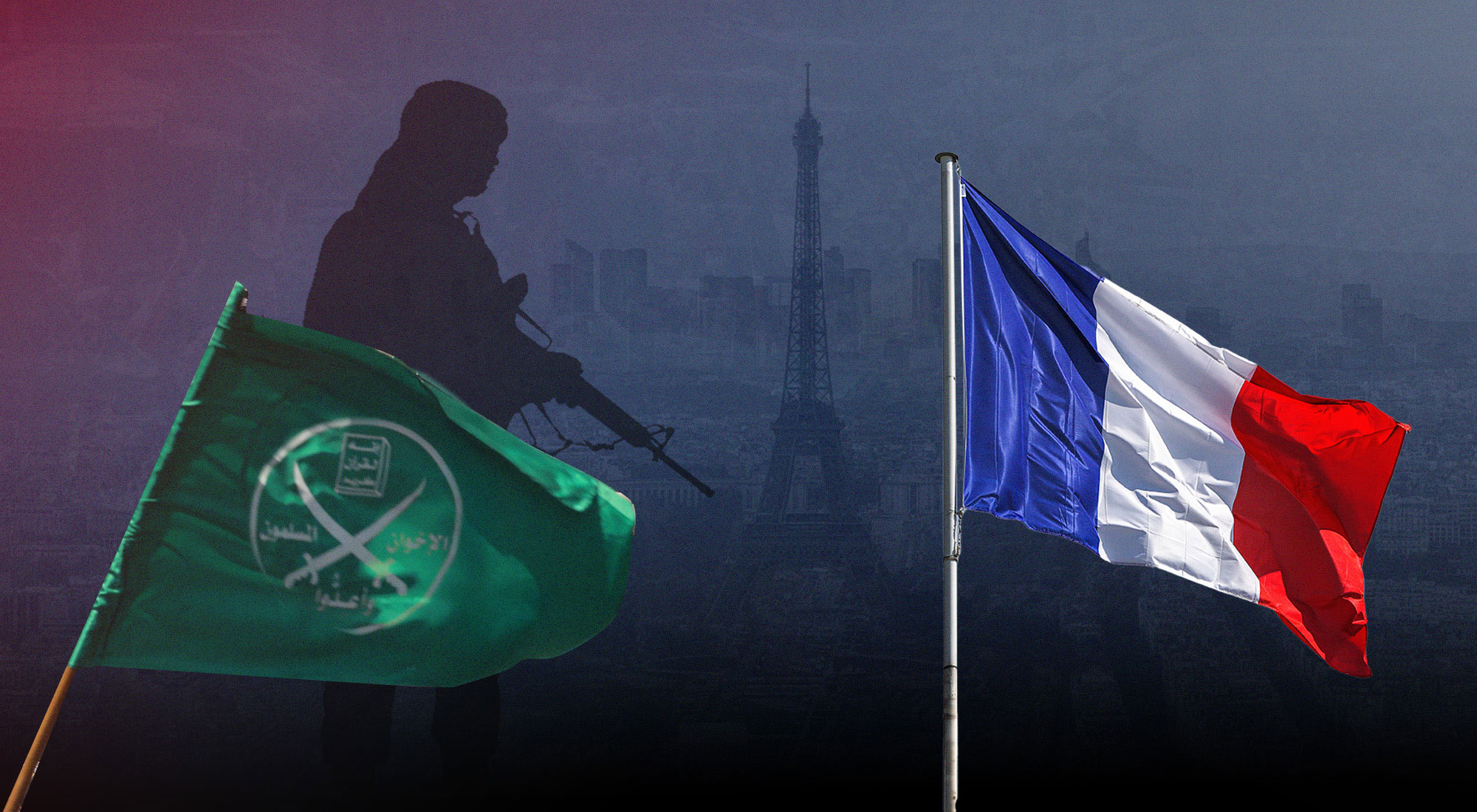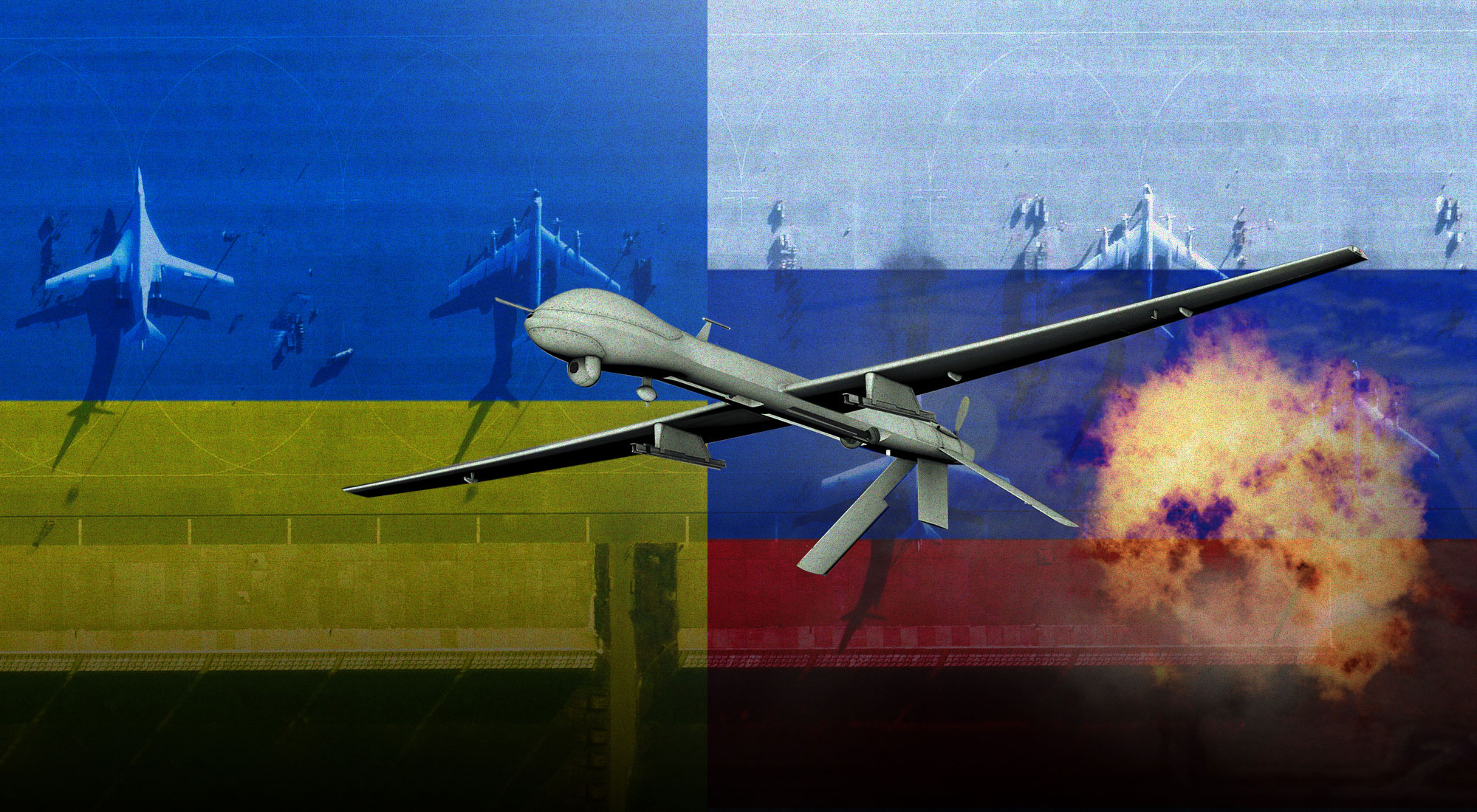The Predicament
A US military withdrawal from Syria would increase the risk of a new expansion of IS. It would allow the Al-Baghdadi followers to make gains across the region and regain what they have lost. Taliban got a similar opportunity when Obama withdrew from Afghanistan, allowing a chaotic situation following the death of Osama Bin Laden. America’s withdrawal will inevitably leave a vacuum in Syria, which will be filled by Iran, Russia, and Turkey. This is akin to what happened following the US withdrawal from Iraq the consequences of which the country faces even today.
In northern Syria, Turkey recently launched an offensive military campaign. The repercussions are large now: World Health Organization data suggest that Turkish units and allied militia forces have forced 200,000 people to emigrate. According to the Syrian Observatory for Human Rights, more than 130 fighters from the Kurdish-led Syrian Democratic Forces and 69 civilians have been killed. It is unlikely that the United States has not assessed the possible repercussions of its troop withdrawal from the region!
The Context
Donald Trump withdrew US units from northern Syria and paved the way for a Turkish military offensive in the region. The decision drew international criticism. Trump is said to be uninterested in strategic foreign policy. We believe that this is not about the “withdrawal” in the traditional quantitative sense of American units but geostrategic “redeployment”. The withdrawal only relates to the ground units and the covert operation against Al-Baghdadi illustrates one of the tools of redeployment. We argue that the withdrawal, as per the US approach, is vertically executed, and horizontally redeployed in the US regional military bases.
On August 30, 2019, President Trump ordered the Pentagon to halve the number of US troops in Afghanistan. Regardless of the consequences of this decision, critics and observers started comparing Trump and Obama’s Middle East policies. Some observers credited President Obama for implementing a grand strategy that enhanced the American power for a long time. Others pointed to its deficiencies and a lack of coherent design.
We argue that despite the differences, there is a broader continuity between the Trump and Obama approaches in dealing with the situation in Syria. A grand strategy is a set of principles that reflects a mixture of continuity and change vis-a-vis the US foreign policy tradition.
In many ways, Obama and Trump’s grand strategies fit squarely within the broad contours of American statecraft since the post-war and post-Cold War eras. Its broad objective has been maintaining the US primacy in the international order. Can we then label Trump’s retreat plan from Syria as a mistake similar to Obama’s retreat from Afghanistan? To put it differently, is Trump repeating Obama’s biggest mistakes in the Middle East?
The retreat of the American forces from Syria seems to be extremely paradoxical and intended to perpetuate the ambivalence of the present situation. Some facts used in support of the retreat plan are undeniable. Some instances include frequent delegation to intermediaries of their regulatory and even real functions; covert operations, as we have seen with the operation undertaken to eliminate Al-Baghdadi. Trump thanked Russia, Turkey, Iraq and Syrian Kurds for their support to the operation. He said: “Russia has treated us wonderfully and opened our airspace for the raid …” and added the “Kurds provided us with some information that was useful”.
The international involvement in regional conflicts has been a major principle in the foreign policies of states of all sizes. From the pro- and anti-communist interventions during the Cold War to the United Nations and NATO-led missions in Rwanda and Kosovo, military interventions remain a constant and abiding feature of modern international relations. However, following the collapse of the Soviet bloc, arguably no region in the world has been subject to as much international focus and foreign intervention as the Middle East and North Africa.
Since 2011, Syria a fully sovereign nation has been the subject of a vastly different type of foreign intervention. It has witnessed varying coalitions of international and local actors, which have been motivated by multiple theories belonging to various schools of international relations. interacting in complex and often ill-defined ways. Immediately following the outbreak of violence (2011-2012), the schism between international perceptions and the various internal ideals were shaping the responses by international actors and local factions. The US then had a presence in Syria, but its mandate was limited to surveillance and the protection of the US assets.
Although the intelligence would not be publicly confirmed until 2013, in the early days on the war Obama administration entered into the conflict. According to President Trump, the United States post-war foreign-policy tradition, was not an expression of higher self-interest, instead it was a naive giveaway that enriched an ungrateful world at America’s expense (Chollet, 2016; Brands, 2016). Others rejected the idea of an Obama grand strategy because of its deficiencies and lack of a coherent design.
The seeds of civil war
Following the collapse of the Ottomans after WWI, Syria was subject to several decades of French domination. The withdrawal of French in 1947 left behind a region deeply divided by various manifestations of ideology and religion.Nationalists were split primarily along theocratic lines, with the dominant Islamist group-the Muslim Brotherhood-arguing vociferously that Syria must be a Sunni Muslim nation, leaving limited place in the sociopolitical regime for Syria’s numerous minority communities. Eventually, opposing forces coalesced around an ideology of “pan-Arabism” (Polk, 2013). From the outset, the origins of the conflict were not well defined, best characterized by the fact that the perception of the Assad regime as a brutal tyranny was given higher importance by the international community than by many locals anti-Assad factions.
Syria was infamously included among George W. Bush’s ‘Axis of Evil’ with Iran, Iraq, North Korea, Libya, and Cuba. Despite a public pledge to ease tensions and develop relations, new sanctions were introduced by the Obama administration in 2010, which ‘aimed to diminish government revenues, particularly from oil exports, and to increase public opposition to the regime’(Ibid). Russia, an ally of the Assad regime, was (and remains) the dominant supplier of both gas and oil to Europe, and neither Putin nor Assad had any objection to Shiite Iran building a pipeline through Syria to share in the European market.
By 2012, the conflict featured as many as 1,000 operationally and motivationally distinct fighting units, representing a ‘bitterly contested field of competing interests. Foreign jihadists flocking to the conflict, viewed themselves as participating in a wider, borderless struggle, emphasizing the larger-than-Syria concept of Pan-Islamism and restoring the Islamic world; a “new caliphate” (Plok, 2013). The post-intervention result in the case of Syria has been depressingly similar and highlighting the growing inability of traditional paradigms to address the most pressing issues of the 21st century.
The new forces and entities against which the international community finds itself in conflict today are not motivated nor defined by Westphalian sovereignty, liberal individualism, or by Marxian philosophy. Moreover, attempts by social scientists and policymakers to rationalize and control the theoretical forces involved have almost invariably ended in confusion and failure. This failure to adapt existing theoretical frameworks with which to approach the conflict in Syria has contributed to the MENA region, in particular, becoming inarguably unpredictable, and unmanageable than at any point during the reigns Hafez Al-Assad (the father), Saddam Hussein of Iraq, or Muammar Gaddafi of Libya.
Syrianazation of the conflict
In his first year of presidency, US President Donald Trump ridiculed Obama’s plan when he announced the retreat of the US troops from Afghanistan. “Conditions on the ground are what will guide our strategy from now on, not arbitrary timetables,” Trump said. He then supported the use of force instead of Obama’s ‘Afghanization’ forcing the Taliban to sit on the negotiating table. But the Taliban had other ideas. Instead of confining itself, it started to make gains and rejected the US efforts to negotiate a settlement. Obama wanted to shift the burden of security on US allies in the region, similar to what the United States did during the Cold War. As such, his policies were aimed at withdrawing US troops from the region and concluding the Iranian nuclear agreement. The purpose of this strategy was to facilitate the US shift to Asia.
Trump’s withdrawal from Syria, however, can be seen as a ‘Syrianization’ of the war, a structure similar to the declaration of the “Afghanization” of Obama’s plan and of “Vietnamization” of former US President Richard Nixon. In 1969, Nixon proposed replacing US combat forces with South Vietnamese troops to rid the United States of a seemingly endless war. That is now Trump’s goal in Syria as well. As Obama’s withdrawal from Iraq and Afghanistan, Trump’s withdrawal from Syria was a belated reaction to the Iraq war.
With US troops out of Syria, there will be scope for Iran’s ambition to expand its military presence and political influence, something that not only scares the US officials, but also its allies in the region.Trump only made matters worse when Turkish President famously asked him on the phone about the situation of US troops in Syria and he replied: “I will leave it to you”.
The expansion of Iranian influence
Iran has spent decades forming relationships with Shiite groups in countries it considers important to its security. These relations between Tehran and groups in countries such as Afghanistan, Iraq, Lebanon, Pakistan, Syria, Yemen, and others have helped Iran reap the benefits of proxy wars and the exploitation of third-party fighters, including terrorists and militias.
Iran has already been sponsoring forces in Lebanon and Iraq for a long time. However, recruiting South Asian Shiites was an entirely new phenomenon. These foreign militia sub-groups have joined a broader network, each with a different name: the Fatimid Brigade, which is made up of Afghans, and the Zeinabbi battalion of Pakistan. This situation will lead to the growth of Iran’s network, taking advantage of the resulting power vacuum to expand Tehran’s influence in the region. This has been an elusive Iranian goal for decades.
Turkey and Russia
Turkey began its cross-border military operation, following President Donald Trump’s decision to withdraw US troops from northern Syria. Moscow is monitoring the gains that can be made due to the emerging situation and is working to accelerate the discussions between the Kurds and Damascus on the one hand, and expand the channels of security and military dialogue that emerged between Ankara and Damascus.
The warnings issued by Moscow at the beginning of the Turkish military operation were almost confined to two parts. First, the Turkish incursion should not affect the entire political process, reflecting Russian fears that prolonging the military operation could lead to a wider confrontation that would undermine the efforts to manage the future “battle” of the constitution. Second, the vacuum created by the US withdrawal must be filled in such a way as to strengthen Moscow’s and the Syrian government’s negotiating cards.
Withdrawals or redeployment
Robert Kagan, through his article ‘The Benevolent Empire’ explains why he believes that United States hegemony is the best possible scenario about other states’ national interests and for the organization of the international system as a whole.
Firstly, Kagan discusses why the US would make the best hegemonic power if there was to be one. He highlights the arrogance displayed by the US, and other competing powers (Kagan, 2005: 6).
According to him, as the importance of a strong military declines, the true power of the US shifts from military force to benevolence within the international system. The American strategy during the Cold War entailed providing more to their friends and allies than was expected from them in return (Ibid).
Richard Falk, however, disagrees with Kagan. In his ‘Will the Empire Be Fascist?’, Falk talks about the dangers of an international system featuring an American empire or hegemony, drawing on elements of fascism.
The question according to him is not whether there is an American empire, but what kind of empire it will become. He believes that even if it ever were the case, the US is no longer benevolent in its actions within the international system (Falk, 2005: 4).
Conclusion
In Syria, there is compelling evidence to suggest that the US withdrawals not only failed to achieve stated goals, but actively contributed to prolonging the conflict and significantly increasing both military and civilian causalities.
Turkey, Iran and Russia’s presence in Syria would simply prolong the civil war by about five times and at least double its death toll, while also exacerbating human rights abuses and humanitarian suffering.
The death toll since 2011 of fighting has exceeded half-million causalities, of which more than a third are civilians. Another 15 million have either been displaced or are wounded.
President Trump had the opportunity to address the challenges and dilemmas of American grand strategy in the early 21st century. Yet what we have witnessed in Syria is the survival of a regime and a political structure, which is the result of decades of Hafedh Al-Assad rule whose legacy is carried on by his son Bashar. Gaddafi’s Libya, on the other hand, was centered around one man’s (albeit unusually large) family.
Finally, while Syria has more enemies than did Libya, its internal resilience – and the stakes held by regional and international powers, Iran, Russia and China – have spared a direct intervention from Western powers that seem not to understand the nature of politics in the region even after decades of presence.
Abdelkader Filali is a Ph.D. from the School of Political Studies, Ottawa University.
References
Chulov, Martin. (2013). Syria’s War More Complex than ever’. The Guardian, September, 19.
https://www.theguarduian.com/world/2013/sep/19/syria-war-stalemate-assad-rebels.
Derek Chollet, The Long Game: How Obama Defied Washington and Redefined America’s Role in the World (New York: Public Affairs, 2016); Jeffrey Goldberg, “The Obama Doctrine,” The Atlantic, April 2016, http://www.theatlantic.com/magazine/archive/2016/04/ the-obama-doctrine/471525/.
Falk, R. (2005). Will the Empire be Fascist? In M. Charlton (Ed.), Crosscurrents in International Relations (4th ed.) (pp.13-24). Toronto, ON:Thomson.
Hal Brands (2016). Barack Obama and the Dilemmas of American Grand Strategy. The Washington Quarterly.
Jeet Heer, ‘Donald Trump’s Foreign Policy Revolution’, New Republic, 25 March 2016; Cassandra Vinograd, ‘Donald Trump Remarks on NATO Trigger Alarm Bells in Europe’, NBC News, 21 July 2016; ‘Trump on Foreign Policy’, National Interest, 27 April 2016; and Victor Morton, ‘Trump Says He’d Force US Military to Commit War Crimes’, Washington Times, 3 March 2016.
Kagan, R. (2005). The Benevolent Empire. In M. Charlton (Ed.), Crosscurrents in International Relations (4th ed.) (pp.13-24). Toronto, ON:Thomson.
Polk, Willaim. R. (2013). Understanding Syria: From Pre-Civil War to Post-Assad. Retrieved from the Atlantic https://www.theatlantic.com/international/archive/2013/12/understanding-syria-from-pre-civil-war-to-post-assad/28198








